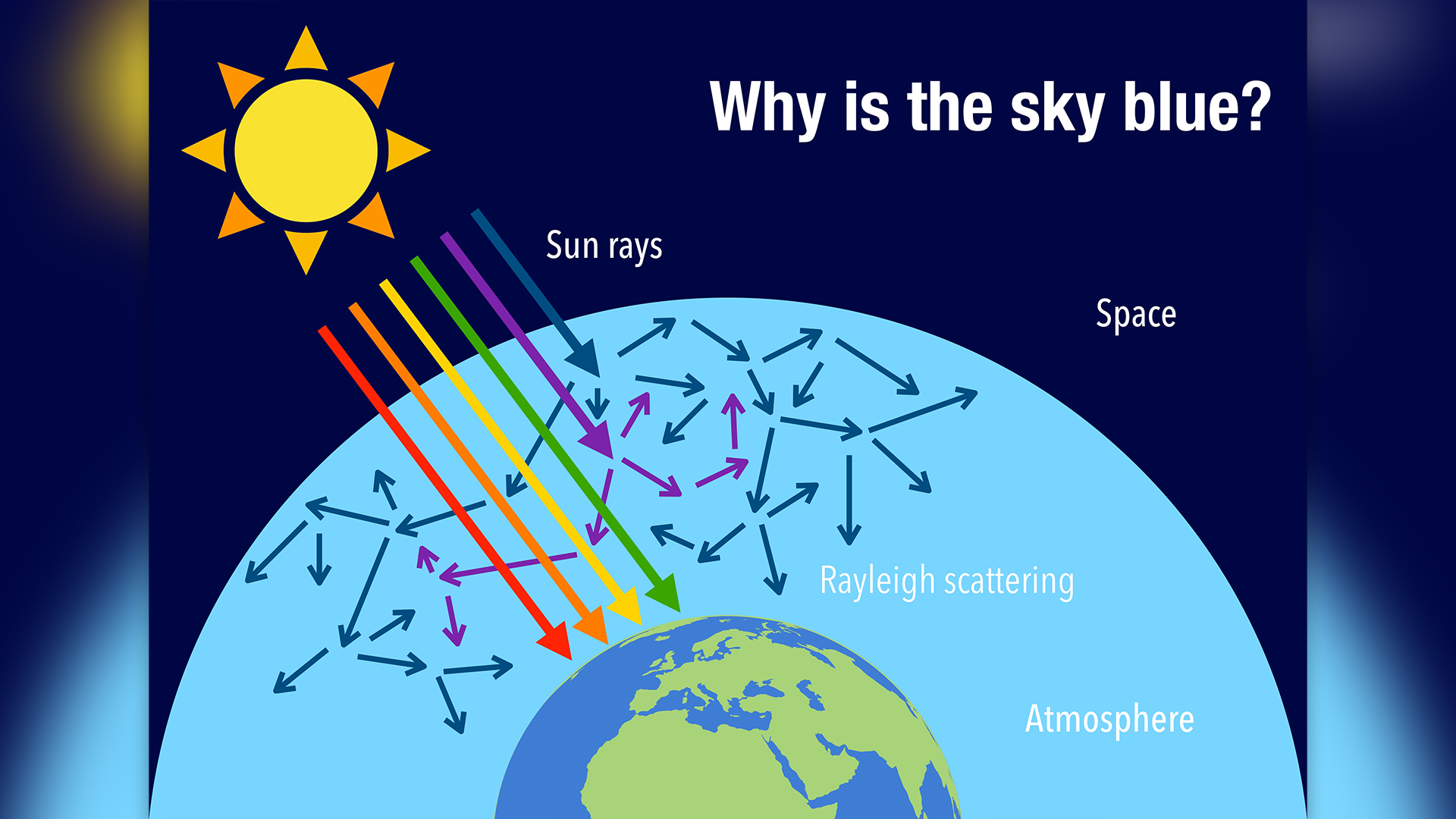
Altitudes, landscapes and climates change dramatically as you move across the globe, but one factor remains nearly ubiquitous. All of Earth's diversity is blanketed under a blue sky. But why is the sky blue? It's not a reflection of Earth's oceans. The real explanation requires a bit of particle physics.
We see blue above us because of how light from the sun interacts with Earth's atmosphere. The visible light spectrum contains a variety of colors, ranging from red light to violet. When all of the colors are mixed, the light appears white, Marc Chenard, a meteorologist at the National Weather Service, told Live Science. But once the white light traveling from the sun reaches Earth, some of the colors begin to interact with molecules and small particles in the atmosphere, he said.
Each color in the visible light spectrum has a different wavelength. Red and orange light waves, for instance, have longer wavelengths, while blue and violet light have much shorter wavelengths. It's the shorter wavelengths of light that are more likely to be scattered — or absorbed and re-emitted in a different direction — by the air and gas molecules in Earth's atmosphere, Chenard said. The molecules in the atmosphere, largely nitrogen and oxygen, scatter the blue and violet light in every direction through a phenomenon called Rayleigh scattering. That's what makes the sky blue.
Related: Why is the color blue so rare in nature?
Even though violet light is scattered too, there are a couple of reasons why we see the sky as more blue than purple, according to Ed Bloomer, an astronomer at the Royal Observatory Greenwich in the U.K. First, the sun doesn't produce equal illumination in all colors; it contains more blue light than violet light, so more blue light is scattered. Additionally, our eyes are not equally responsive to all colors, Bloomer told Live Science; they are less sensitive to violet light, meaning we are more likely to see blue hues than purple ones.

This preferential scattering of blue light also plays into the colors of sunrise and sunset. At sunset, as a particular point is turning farther and farther from the sun, sunlight must travel farther through the atmosphere to reach your eyes. By the time the sunlight reaches you, all of the blue light has been scattered away. As a result, the orange, red and yellow wavelengths are all that's left to color the sunset.
The vast blue sky is produced by a combination of factors, Bloomer said. If you were on another planet, you might be looking up at a totally different color, depending on the molecules in the alien world's atmosphere, the particles of dust swirling around or the spectrum of light coming from a nearby star.







